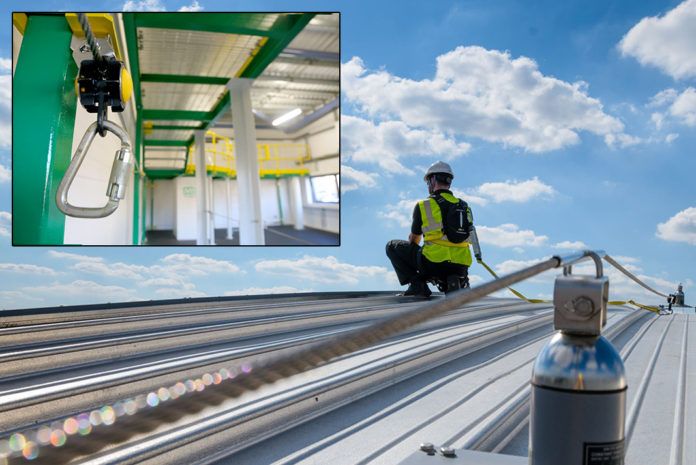There were 35 fatal injuries to workers were due to falls from height in 2017/18, according to Health and Safety Executive (HSE) statistics. The potential risks associated with working at height are plain to see, but thorough preparation and close attention to detail has and will continue to help reduce this figure. Matthew Bailey, divisional manager, inspection and certification, at HCL Safety, offers his top tips to consider before working at height, and explains why professional inspection and certification can contribute to safer working.
1. Pay attention to legislation
There are many ways to mitigate these risks but first and foremost, they must be implemented from a deep understanding of all relevant legislation. Doing so will not only help to mitigate potential risks but help ensure that those responsible for the safety of those that work in height are acting in accordance with HSE guidance. The HSE states, for example, that those in control of any work at height activity must make sure that work is properly planned, supervised and carried out by competent people.
2. Always carry out a comprehensive pre-use inspection
Those that work at height who have received quality training will be competent and well-equipped to carry out a thorough pre-use inspection of all equipment before any work at height takes place. They will also be able to check whether all relevant certification is in place. This is essential. Annual inspections and formal checks should also be carried out by third party suppliers (such as HCL safety) on a regular basis. Typically, this is annually, but it depends on the application and frequency of use (amongst other factors).
3. Mitigate the risks
Follow the hierarchy of control for working at height which means, if at all possible, eliminate the risk entirely. If it’s unavoidable, then select collective measures to help prevent falls (such as guardrails and working platforms). If this isn’t possible, then minimise the distance and consequences of a fall by working in fall restraint. Working in fall arrest should be a last resort.
4. Select the right equipment for the right job…
For work to be carried out safely and efficiently, the absolute right equipment for the job must be in place, whether that be permanent or temporary guardrails, fall restraint or fall arrest equipment. All equipment must also be compatible with each other, such as PPE and engineered systems. It is vital to recognise that a ‘one-size-fits-all’ approach will often not improve employee wellbeing or safety. If items cannot be used in unison and/or do not fit properly, then this could lead to inadequate protection.
5. … And make sure it’s high quality
All equipment used should be designed and manufactured in compliance with essential health and safety requirements. Achieve peace of mind that this is the case by partnering with a quality, reputable manufacturer and choose equipment based on the job at hand: Can it be done from ground level? What space is available? What are the risks? Asking pertinent questions will help when selecting equipment and ultimately, help mitigate risks.
6. Have a rescue plan in place
Importantly, when working within fall arrest, together with all relevant PPE, a rescue plan, in accordance with section seven of the Working at Height Regulations 2005, must be in place. It is not just the responsibility of the emergency services. Furthermore, any delay in the emergency services arriving on site could be critical for the worker. Assistance in the development and implementation of a comprehensive rescue plan is a typical by-product of top-quality training,
7. Do nothing without training
Employers have a responsibility under the Health and Safety at Work Act 1974 to provide suitable information, instruction and training for their employees. Training gives those that work at height the confidence, knowledge and skills required to carry out their work safely and efficiently. High quality training should cover both work at height theory and practical exercises, including proper inspection of PPE and the execution of relevant risk assessments and method statements.
8. Got your PPE?
PPE plays a vital role in mitigating the potential risks associated with working at height. The PPE chosen should be appropriate for the job at hand, safe and comfortable. A more comfortable worker typically makes for a more productive worker. All PPE should be suitable for the work activity being undertaken and also the prevailing environmental conditions. Compatibility with other fall protection equipment is also vitally important.




